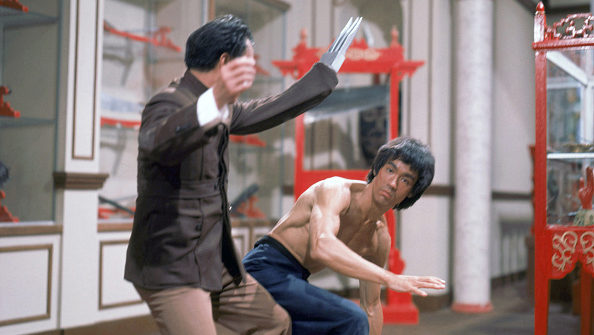Best cheap TVs 2025: smart and 4K TVs for under $500, picked by our experts
The best cheap TVs still offer great all-round performance
Finding a truly cheap TV that delivers solid picture quality, reliable audio and robust app and gaming support is a truly difficult task.
We know that as we’re continually searching for cheap, sub £500 / $500 sets to test that deliver on all these areas and despite our efforts currently only have one recommendation that was good enough to earn a hallowed five-star rating from our reviewers.
But, don’t let that put you off the wealth of other four star recommendations on this list. A four star rating from our reviewers is still a positive score and means the set will meet most movie fans, or its intended market’s needs. It just means that it didn’t quite deliver the goods in one of the key metrics we care about – which at the lower end of the market is very common.
You can see how we test cheap TVs at the bottom of this page, but the short version is that every set goes through a rigorous comparative testing process in our dedicated viewing rooms. We do this to ensure any TV we recommend meets our baseline for quality and is better, or at the very least competitive, with similarly priced rivals, so you can trust our buying advice.
The quick list
The table below offers a quick look at all the cheap TVs we recommend in this article. Every TV has been thoroughly tested by our team of experts in one of What Hi-Fi?'s viewing rooms, so you can trust our advice.
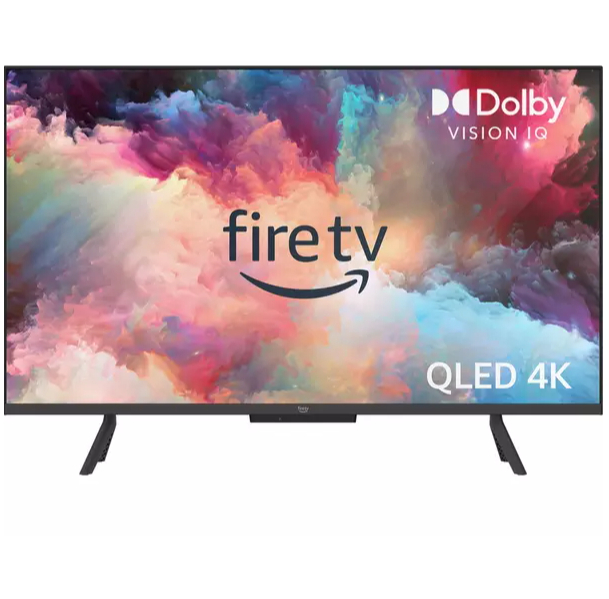
Best overall
If you want a budget TV with all-round ability, the 50-inch Amazon Fire TV Omni QLED is for you.
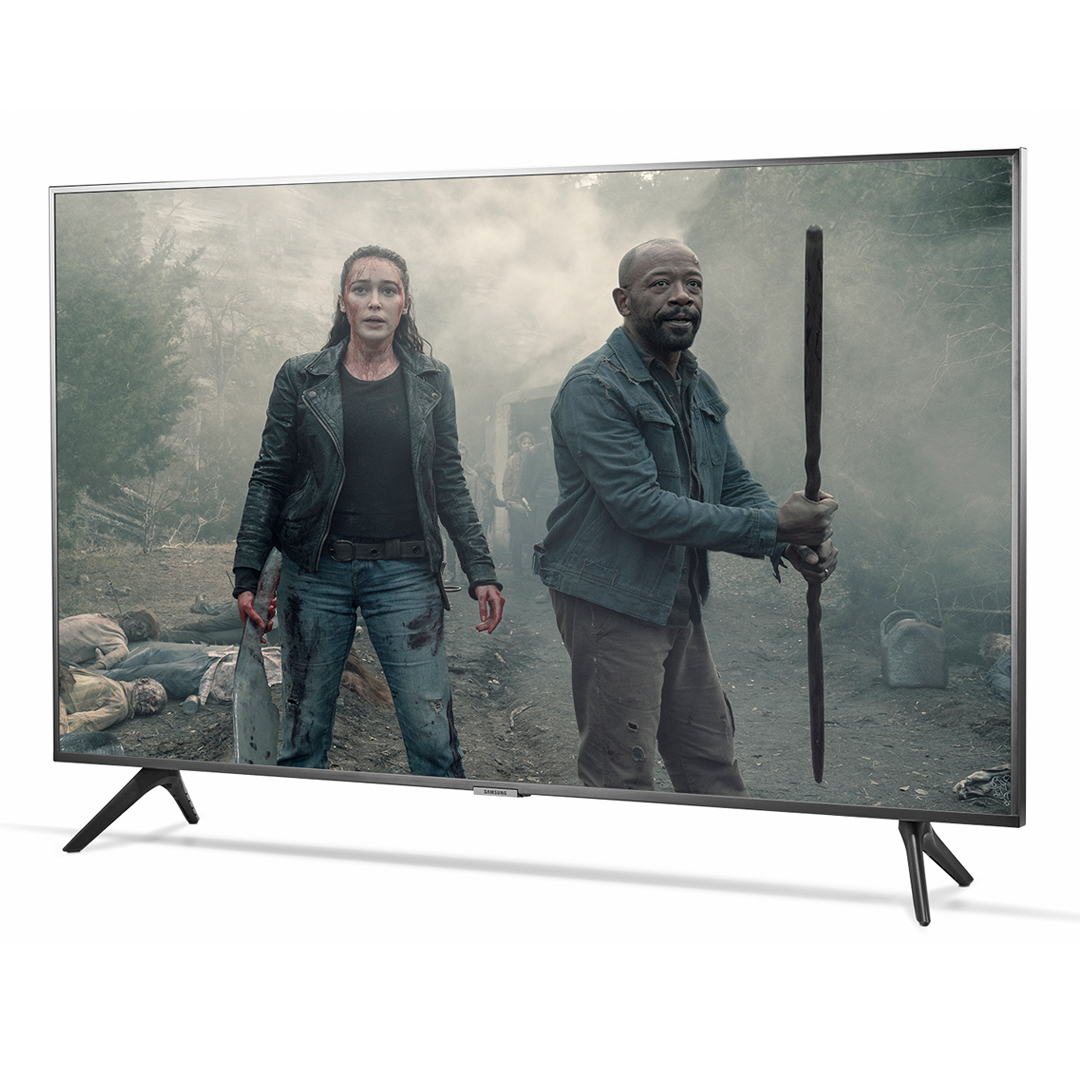
Best 42-inch
If you don't need a giant screen, but want a solid value cheap TV then this Samsung is for you.
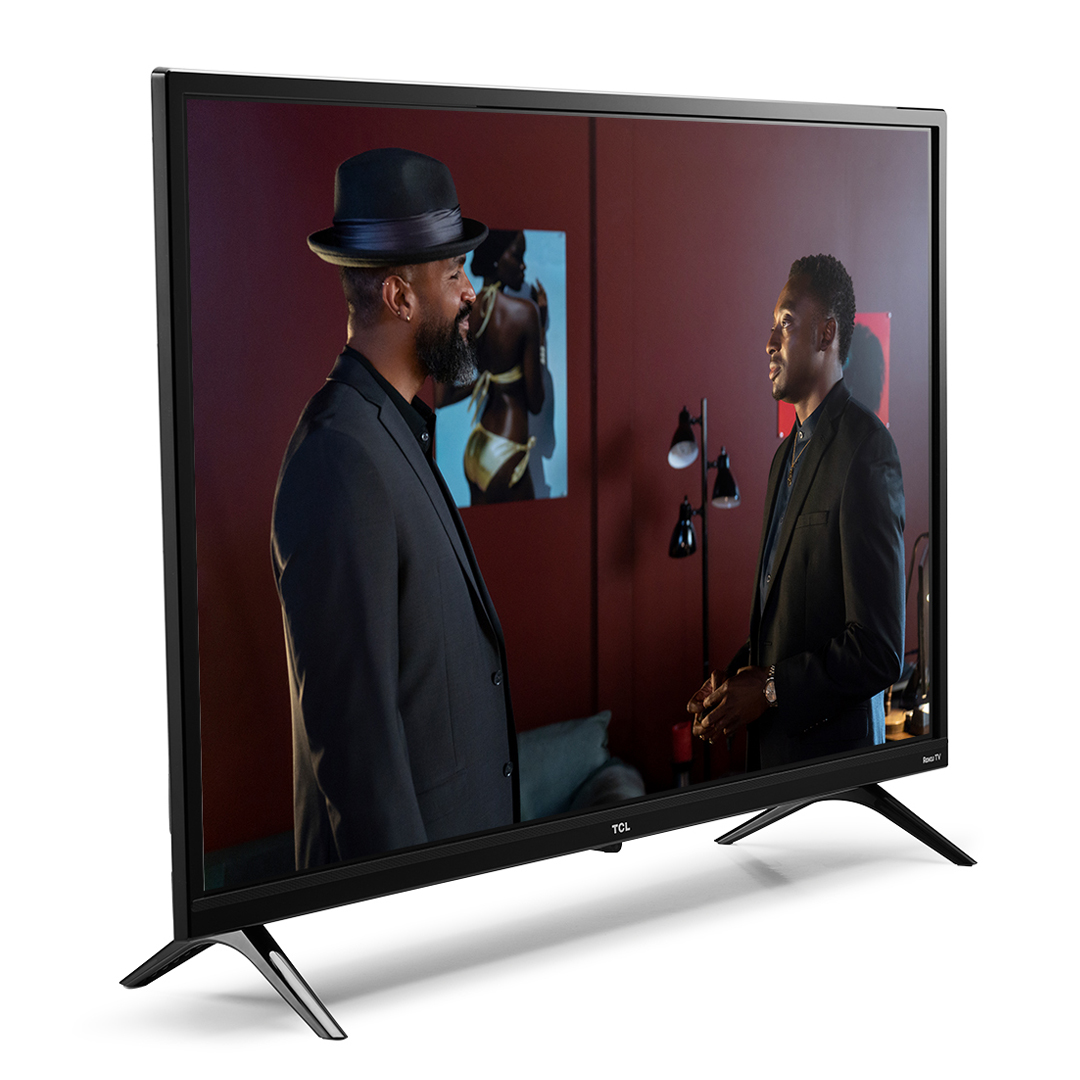
Best 32-inch
Want an affordable bedroom or kitchen TV that doesn't take up lots of space? The TCL 32S335 is a top choice.
Load more
Recent updates
Updated 30th January 2025: We removed the 55-inch Samsung UE55CU8000 as it is no longer on sale and updated our Amazon Omni recommendation to include the 50 and 55-inch models.

I'm What Hi-Fi?'s TV & AV Editor and I've been reviewing TVs for 17 years. I got into this business not just because I'm obsessed with picture quality, but also because I'm obsessed with value. You shouldn't have to spend a fortune to get a great TV, movie and game experience at home, which is why I'm committed to unearthing the great cheap TVs that are lurking online and in stores.
The best cheap TVs in 2023
Why you can trust What Hi-Fi?
Below you'll find full write-ups for each of the best cheap TVs in our list. We've tested each one extensively, so you can be sure that our recommendations can be trusted.
Best overall
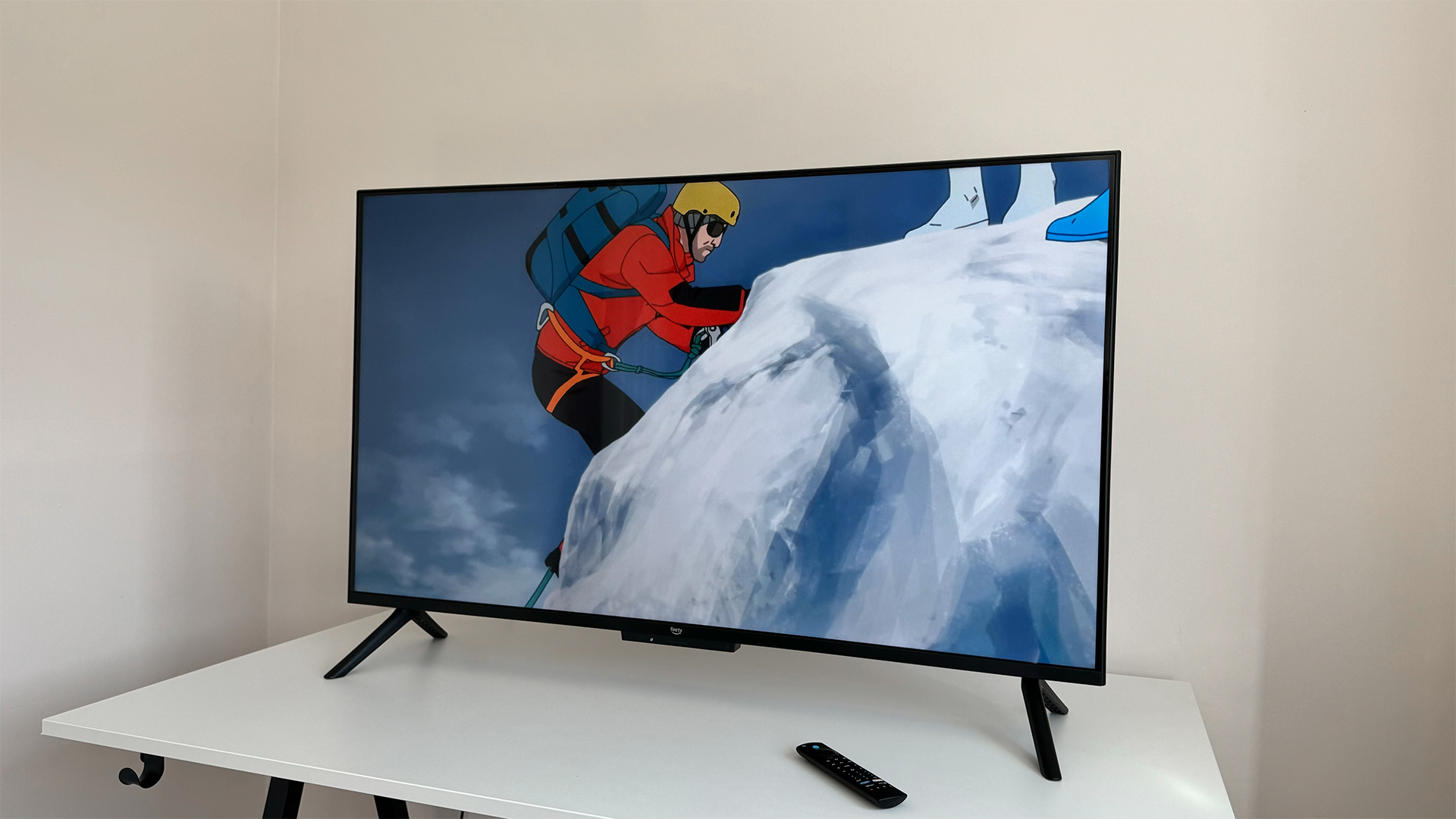
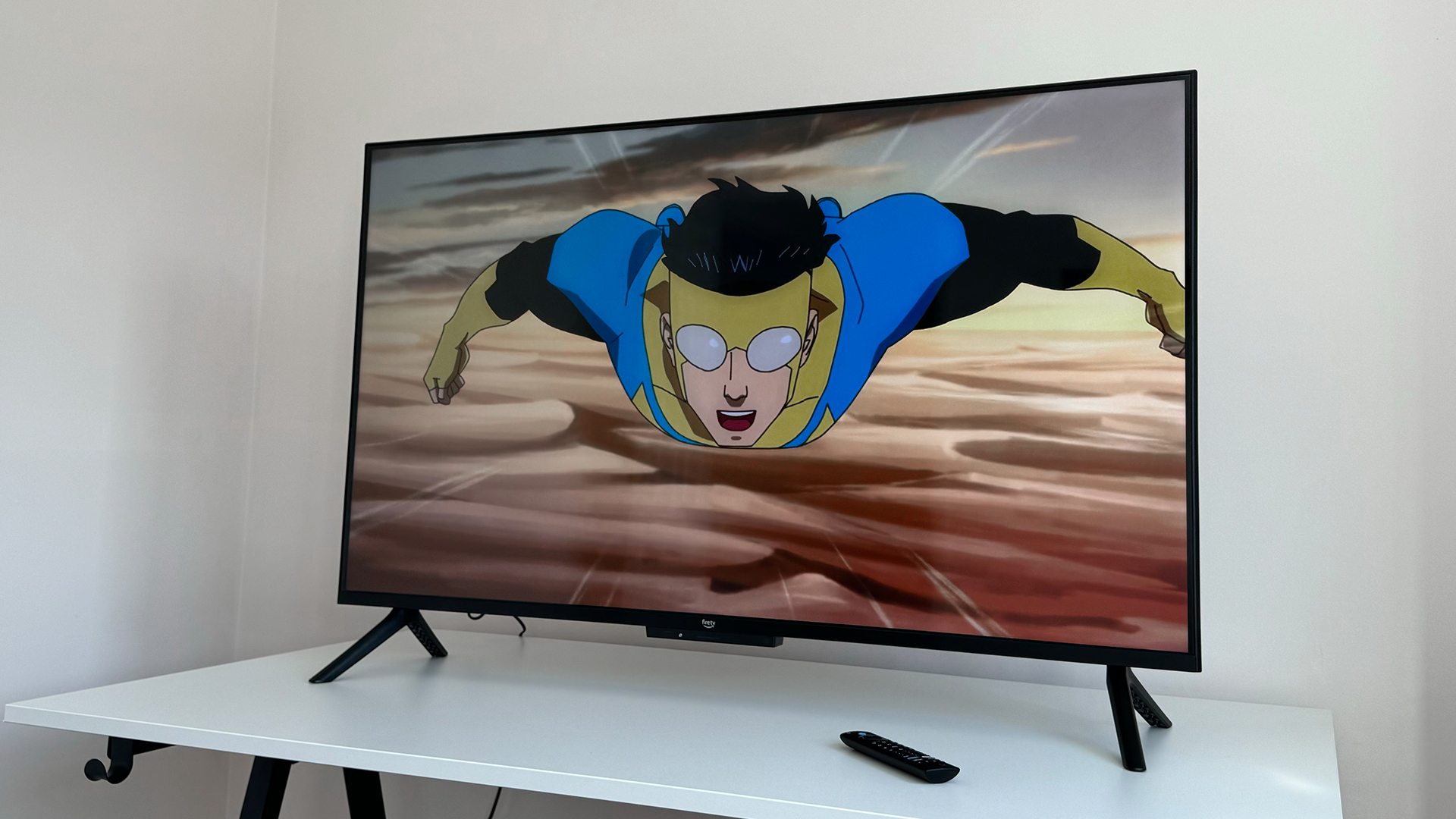
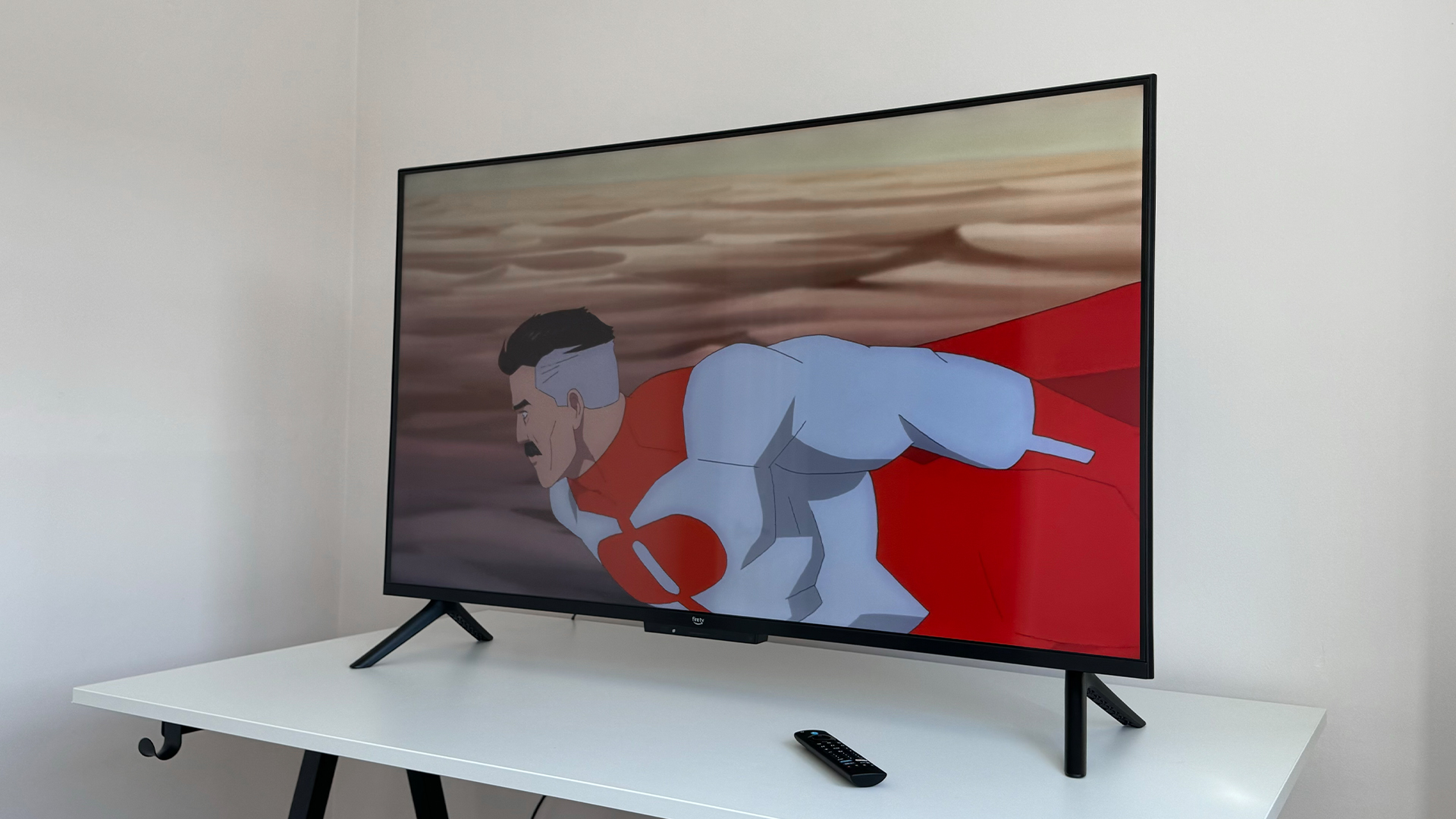
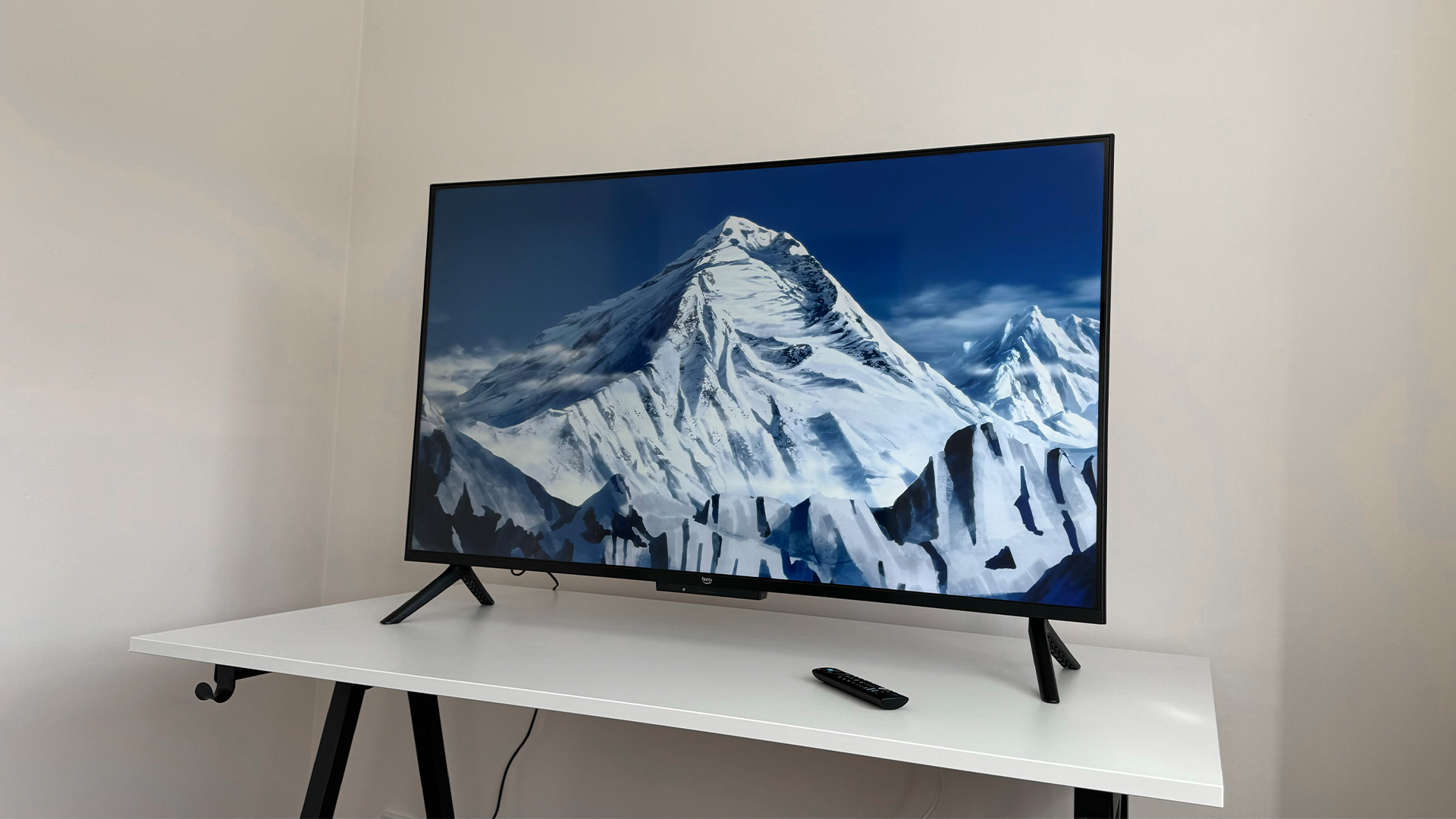
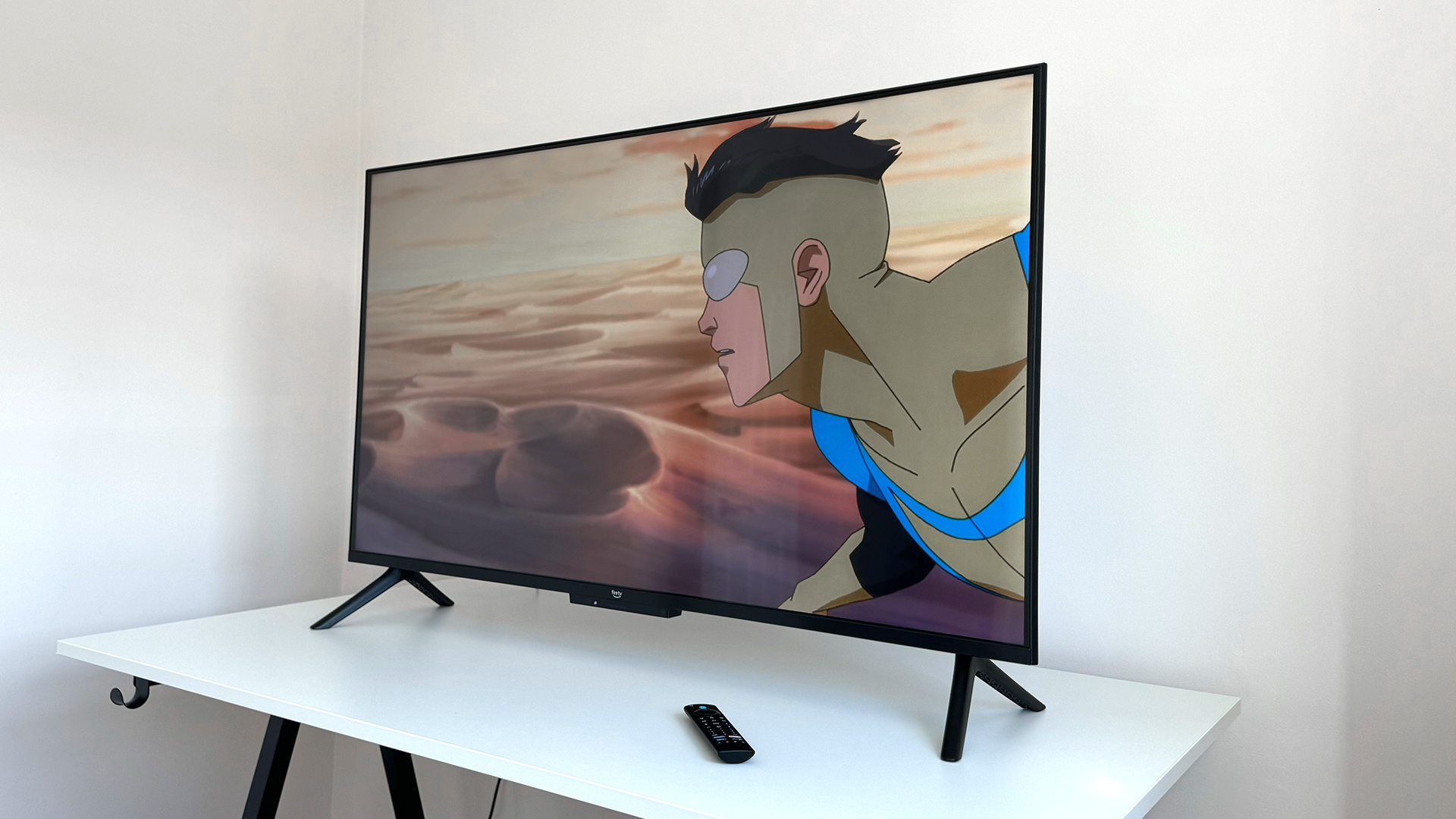
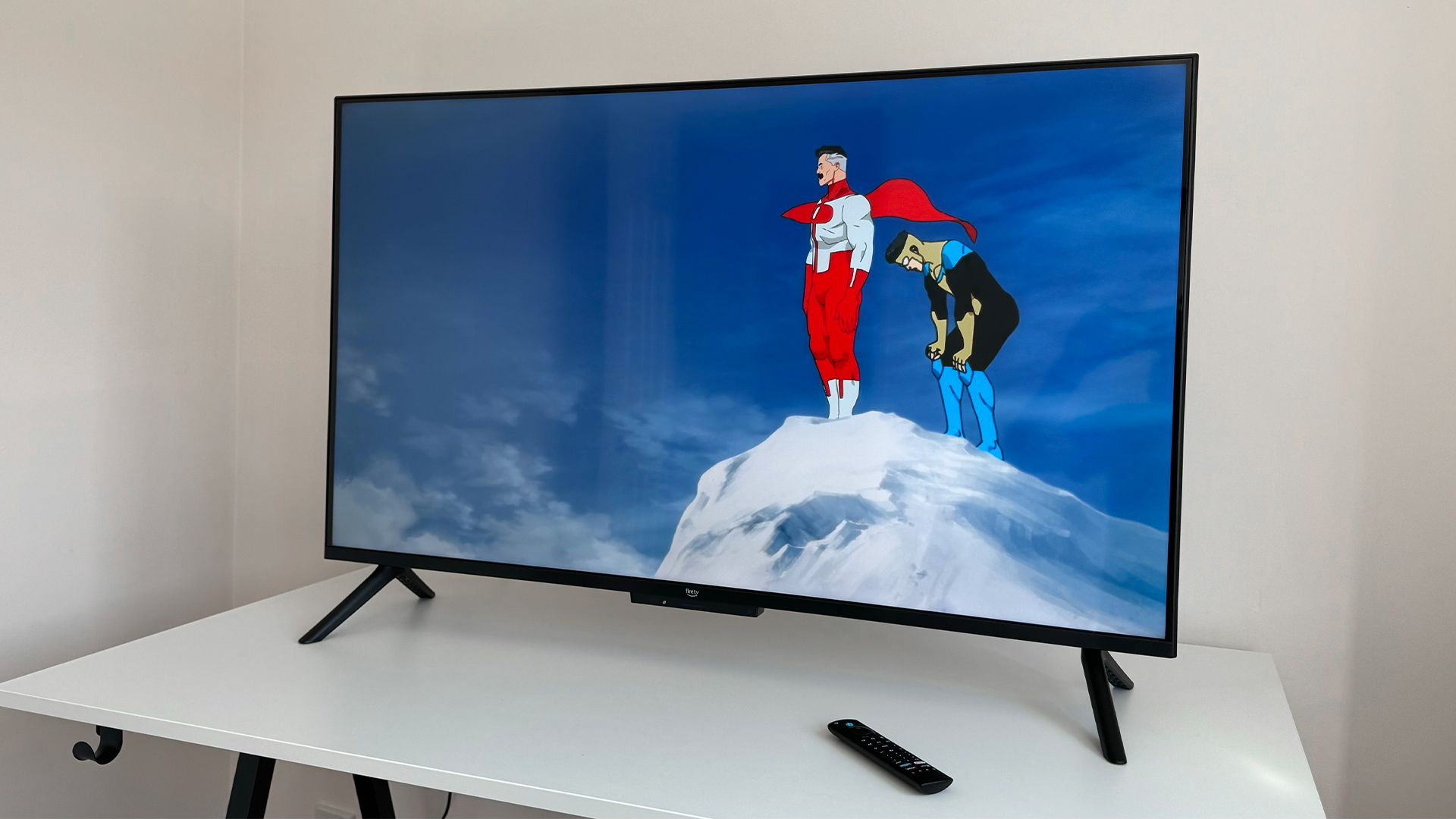
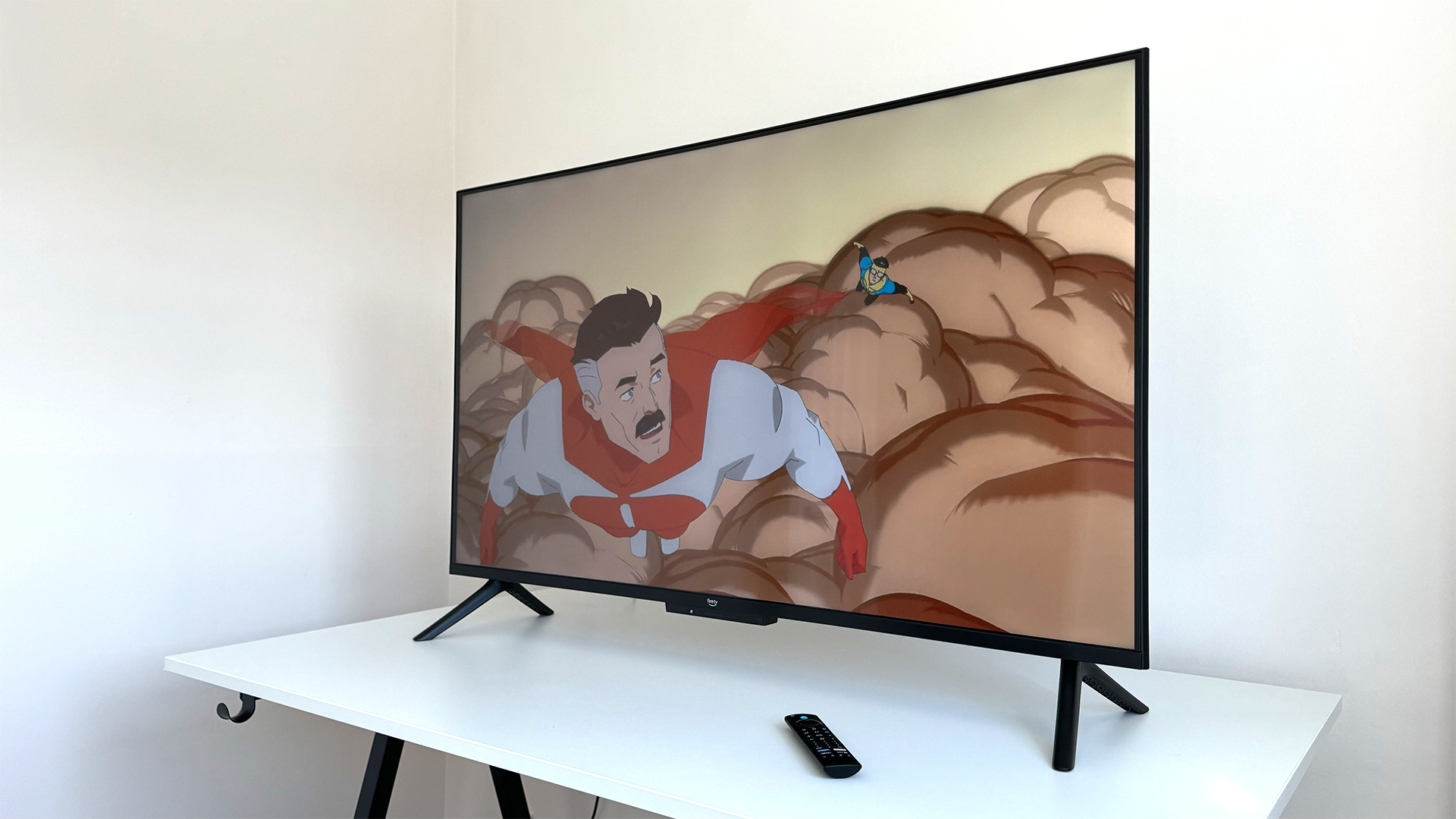
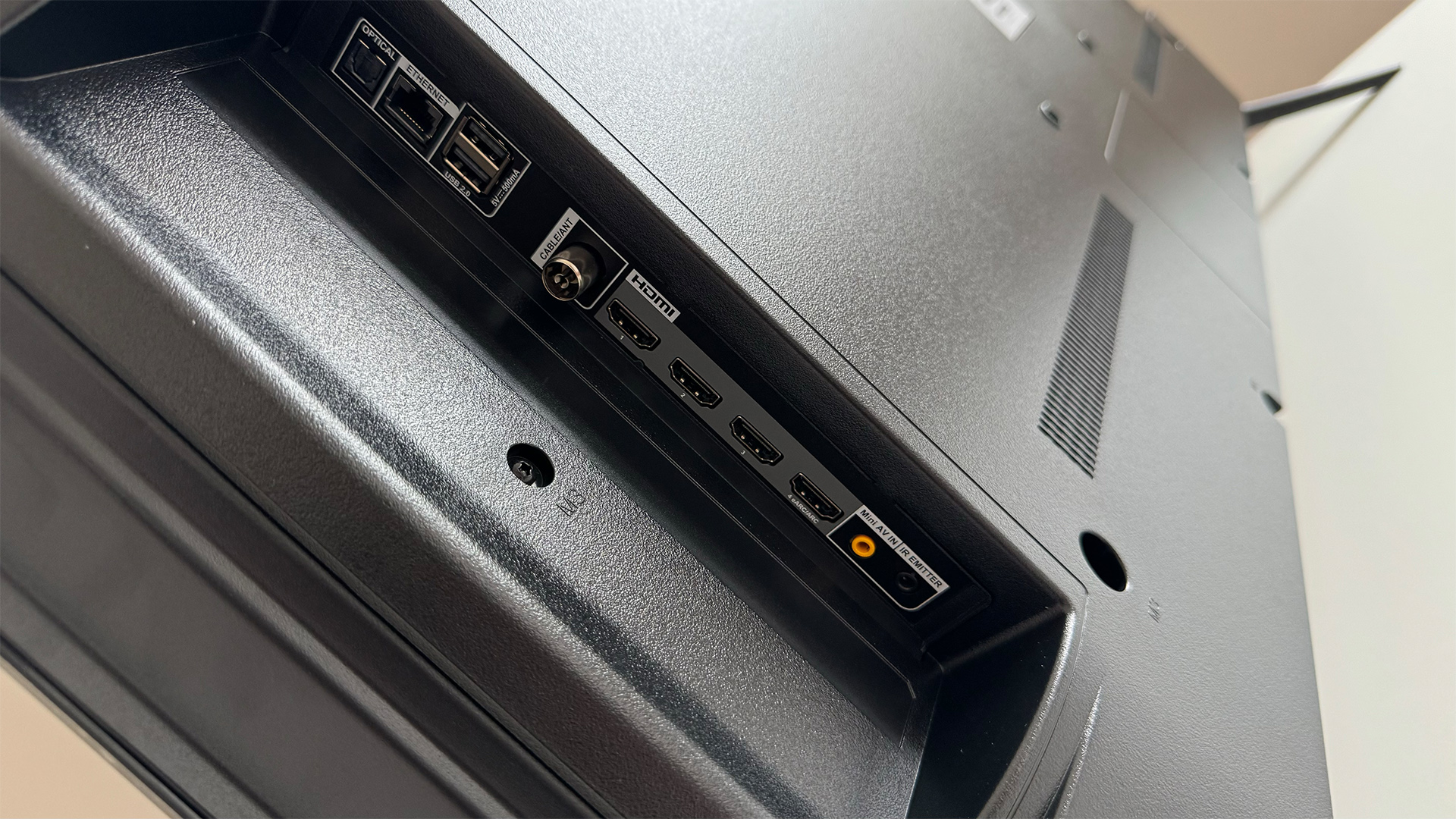
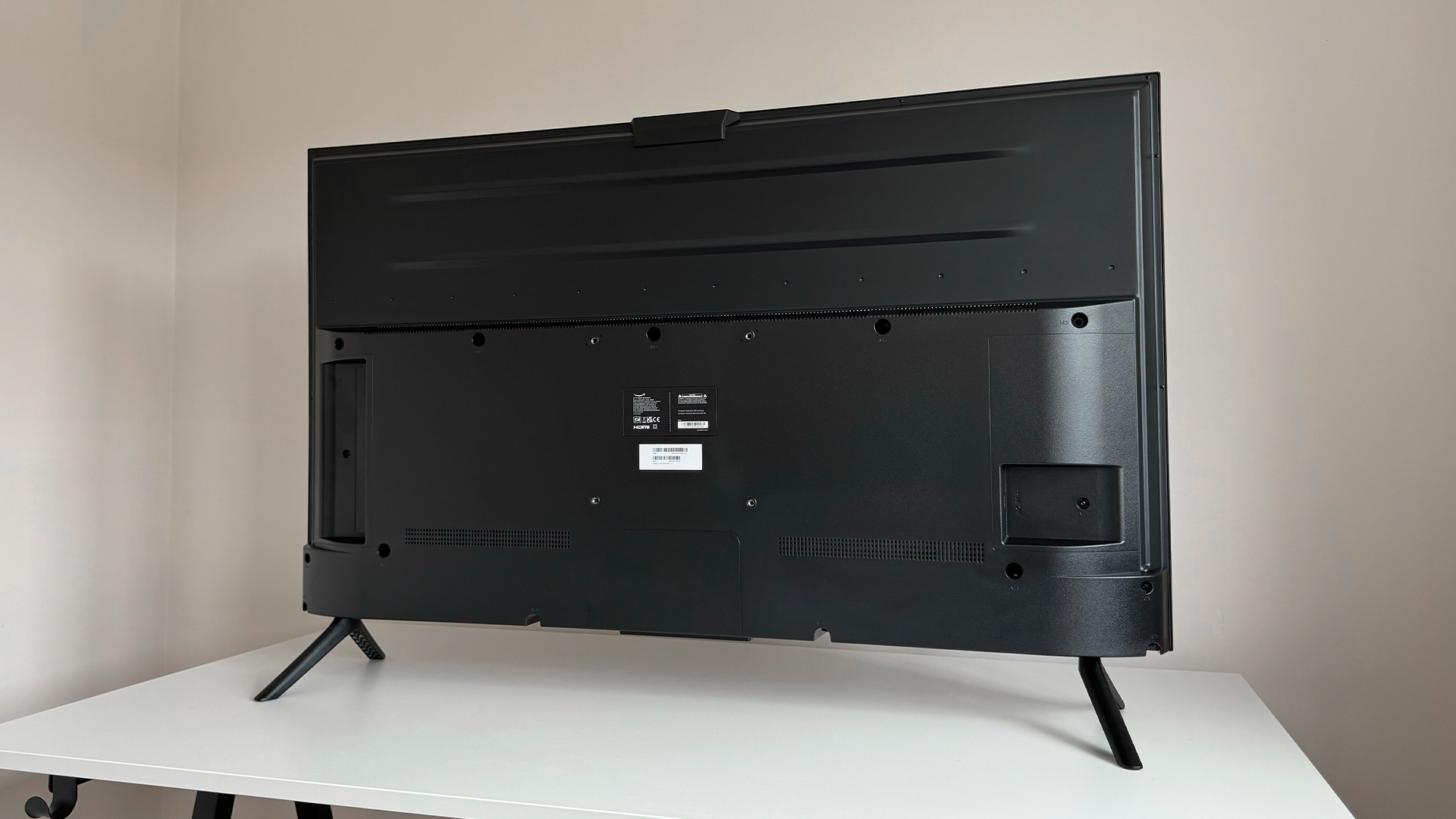

Specifications
Reasons to buy
Reasons to avoid
The Amazon Fire TV Omni QLED, 50-inch is one of the only cheap TVs to earn a perfect five-star rating from our reviewers. And with the 50- and 55-inch set getting ever cheaper, it remains the one we recommend to most people.
These sizes of Fire TV Omni succeed where their 65-inch sibling just falls short, earning it the coveted fifth star.
Its design might be a bit less premium, with black plastic in place of the silver accents. And its feet are unhelpfully wide (make sure you measure your TV cabinet before buying). But its bezel is pleasingly slim, and lets the screen do the talking in terms of visual appeal.
Alexa comes baked in, for answering queries, controlling the TV using spoken commands, and for harnessing all your other smart home appliances like Alexa speakers and video doorbells. The Fire TV OS is very usable – though obviously very Amazon-centric – and has all the apps you would expect. The TV supports all four formats of HDR too, with even the more advanced Dolby Vision IQ and HDR10+ Adaptive on offer. And its gaming spec is very good too, with VRR and ALLM onboard, as well as an eARC port to send uncompressed Dolby Atmos signals to a compatible soundbar or AV receiver.
So far, so good. But what about the picture? Cynics might assume Amazon would stuff the TV full of specs and call it a day, but they would be wrong: the firm has paid close attention to picture quality. The 50-inch Fire TV Omni is a surprisingly consistent and considered performer that provides a very satisfying and authentic picture. Blacks are deep, highlights punchy, and it all walks a fine line between vibrancy and subtlety. There is still some slight smeariness to movement, but that's to be expected at this price, and it's not that noticeable.
Sonically, it's clear and direct, and avoids the sort of low-end distortion that's common from TV speakers. There's a lot to be said for that, especially at this price level.
Read the full Amazon Fire TV Omni QLED QL50F601 review
| Attributes | Notes | Rating |
|---|---|---|
| Picture | Works within its means to give a decent, detailed picture | ★★★★★ |
| Sound | No Dolby Atmos, but no bassy distortion either | ★★★★☆ |
| Features | Very good spec for the price | ★★★★☆ |

We have now tested the Amazon Omni QLED TV in three different sizes, and they all performed differently. This 50-inch version is very good for the money, but the 43-inch model is terrible. The 65-inch Omni QLED is decent, but too expensive for this list. We haven't tested the 55-inch model, but it should perform similarly to the 65-inch model, so it might be worth a punt if the Samsung below doesn't take your fancy.
Best 42-inch

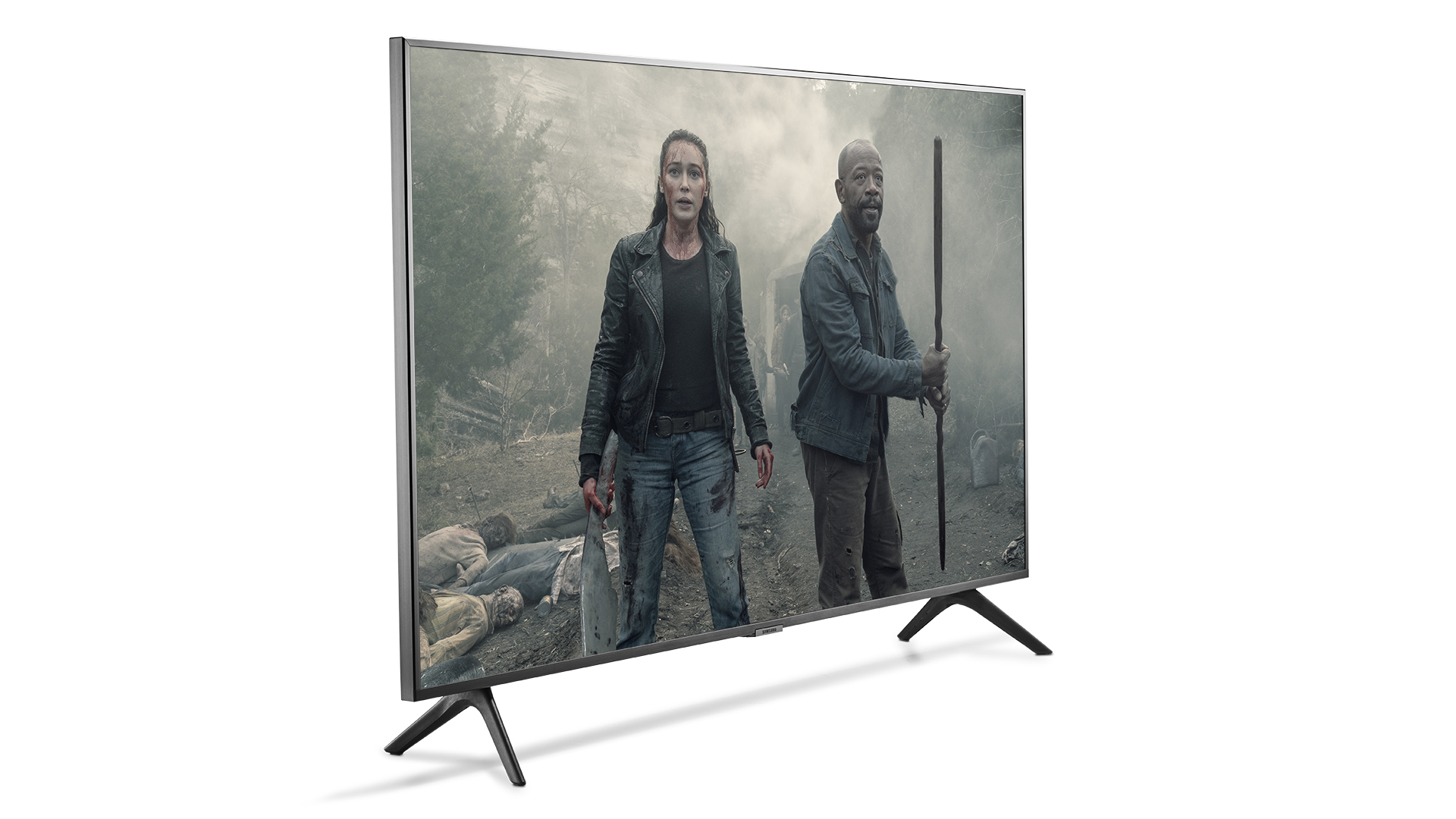
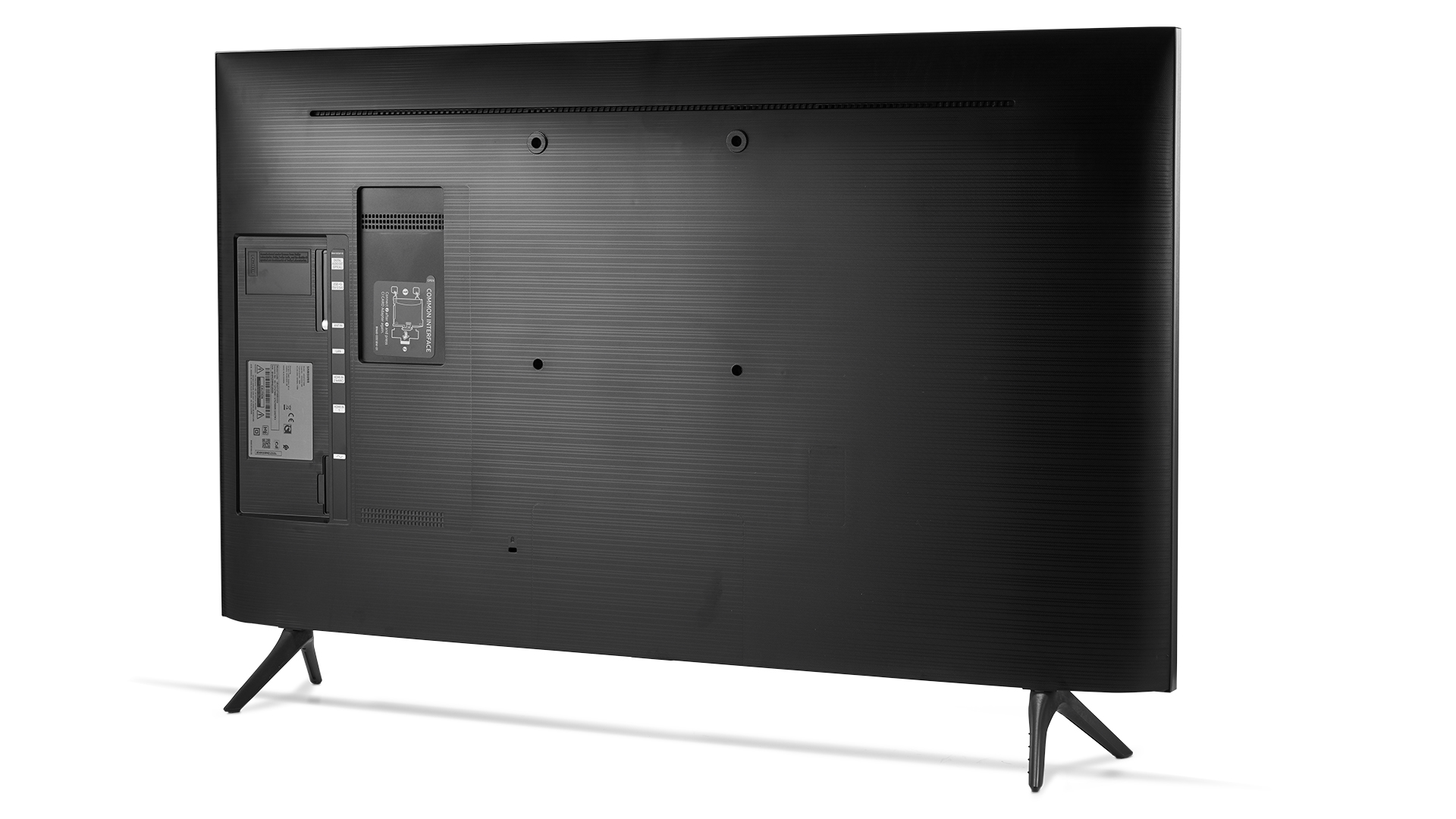
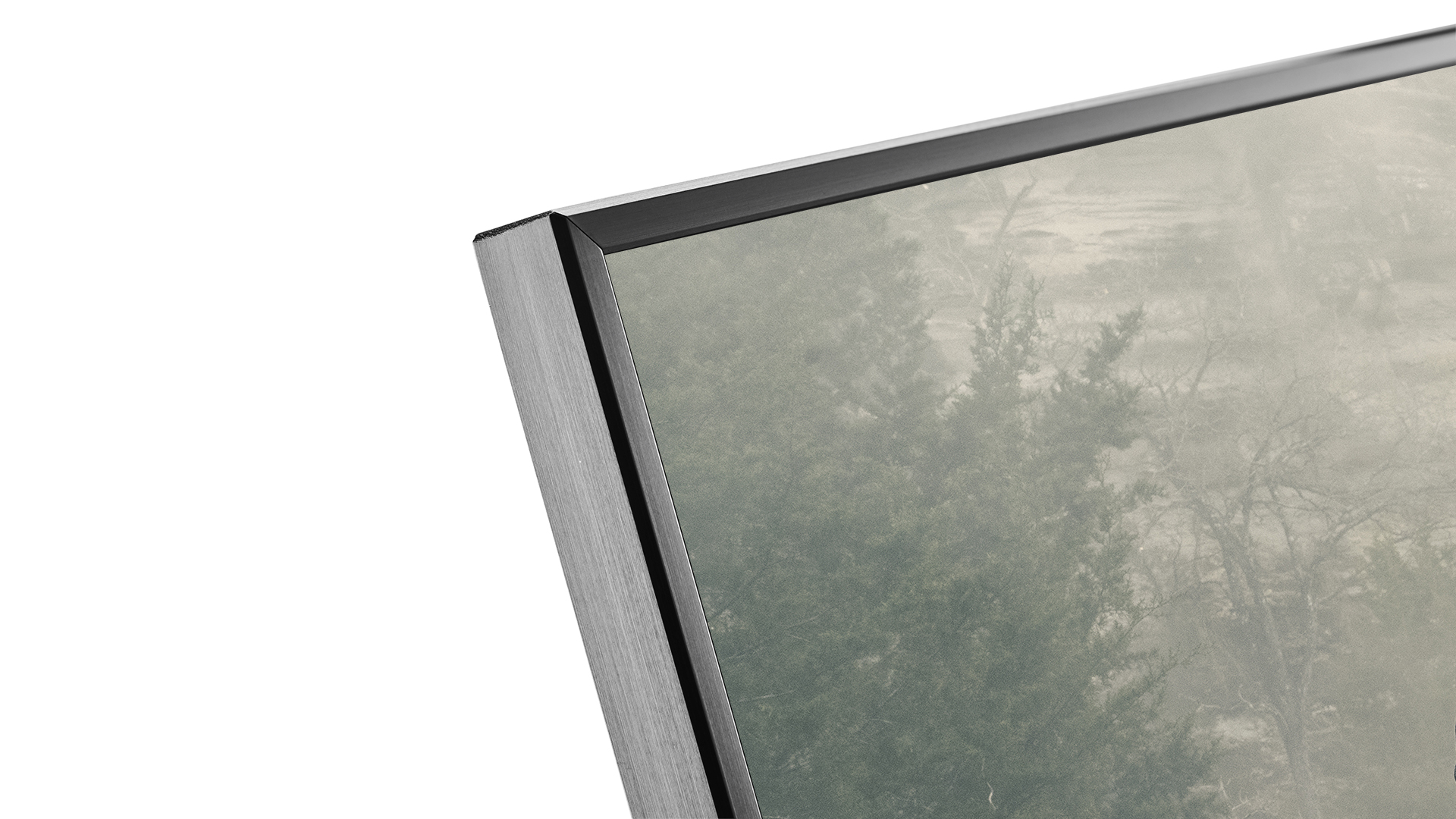
Specifications
Reasons to buy
Reasons to avoid
This 43-inch model is one of Samsung's cheapest 4K TVs but it boasts the company's core performance technology and impressive smart features. In fact, this set outperforms expectations to the extent that it's just about the best cheap TV on sale right now.
Whereas most TVs of this size skimp on features, this model has the same (brilliant) Tizen operating system found on Samsung's pricier TVs, complete with a well-stocked app selection.
Picture-wise, it supports HDR formats (though not Dolby Vision, which no Samsung sets support) and Auto Low Latency Mode, which makes it a great option for PS5 and Xbox Series X owners on a budget. The contrast ratio isn't as impressive as a (much pricier) OLED or QLED panel, but the blacks are actually surprisingly deep for such as cheap TV.
With excellent picture performance for a TV of this size, and smart features galore, this model is our current pound-for-pound champion.
Read the full Samsung UE43TU7100 review
| Attributes | Notes | Rating |
|---|---|---|
| Picture | A top performer for the price | ★★★★★ |
| Sound | Ok, but not immersive for movies | ★★★☆☆ |
| Features | Decent app selection but it could have more connectivity for gamers | ★★★★☆ |
Best 32-inch
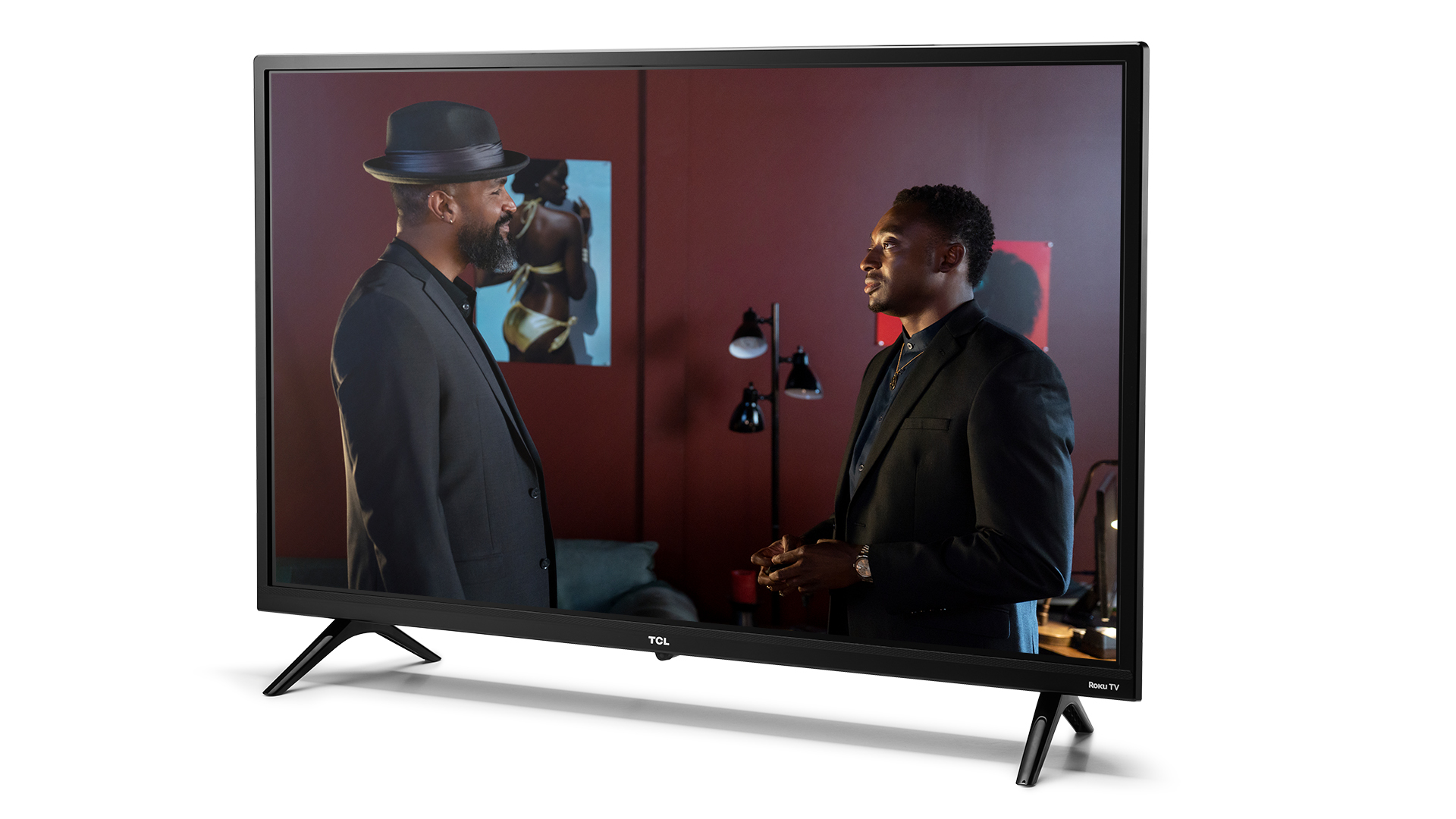
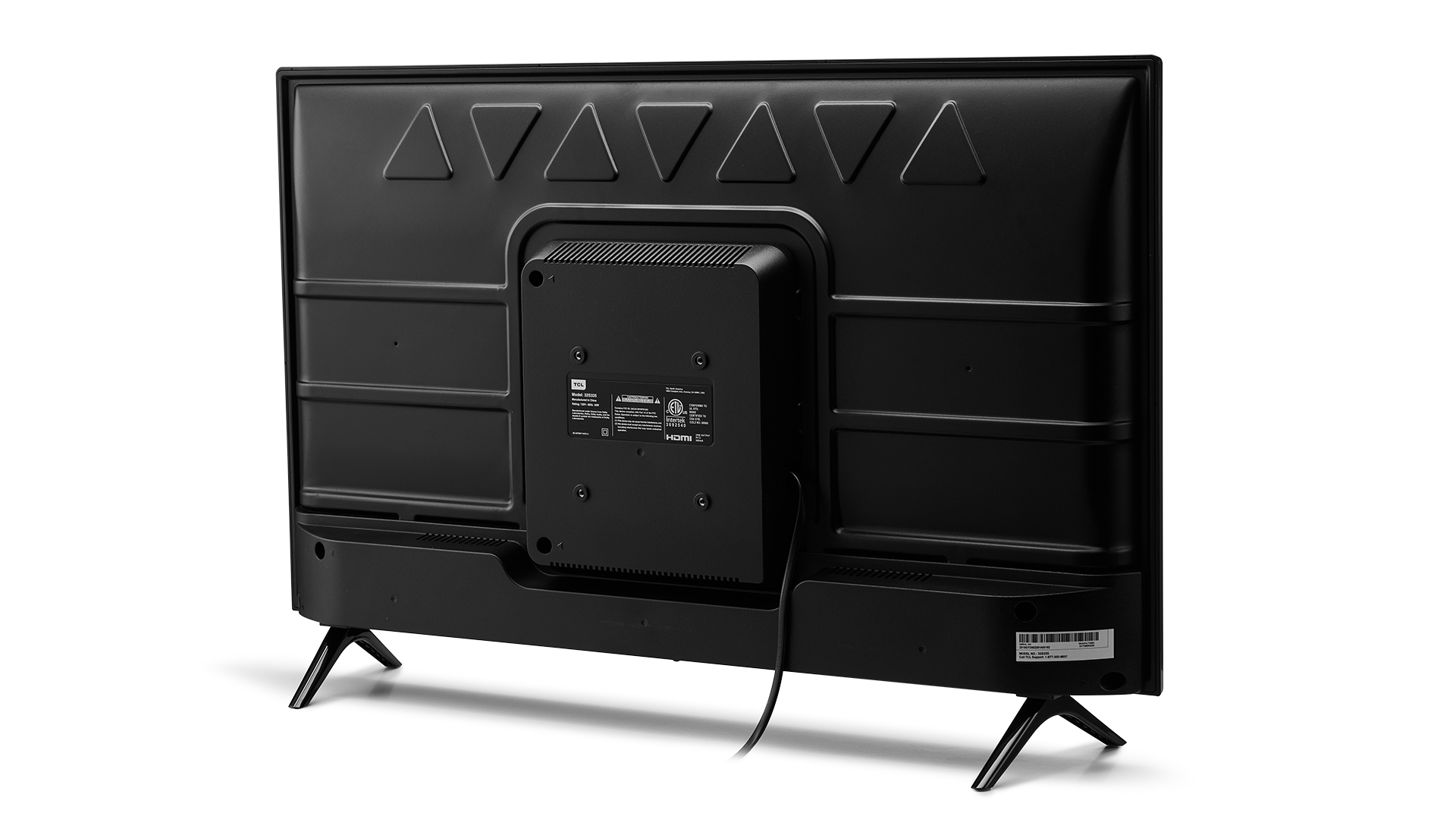
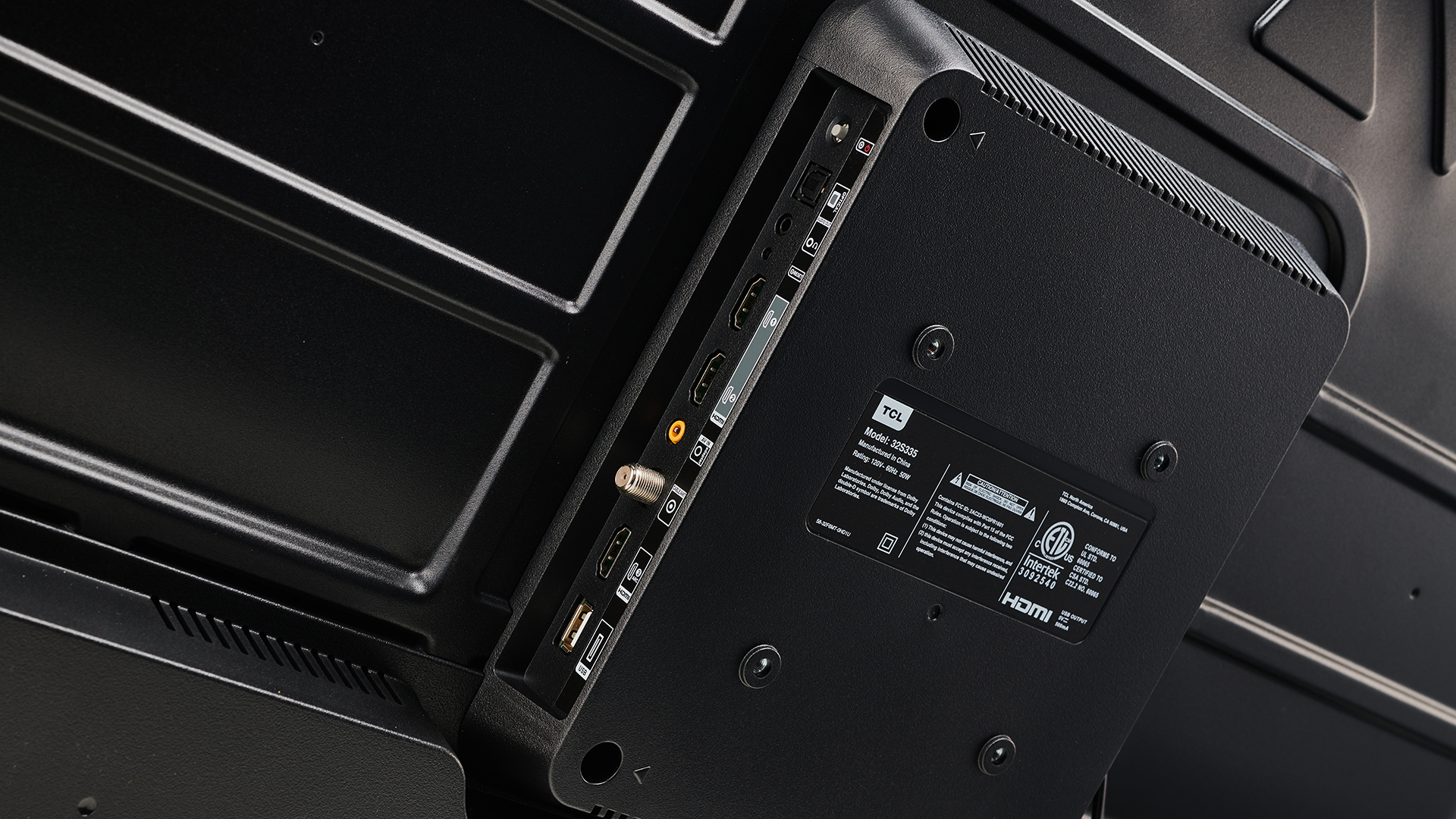
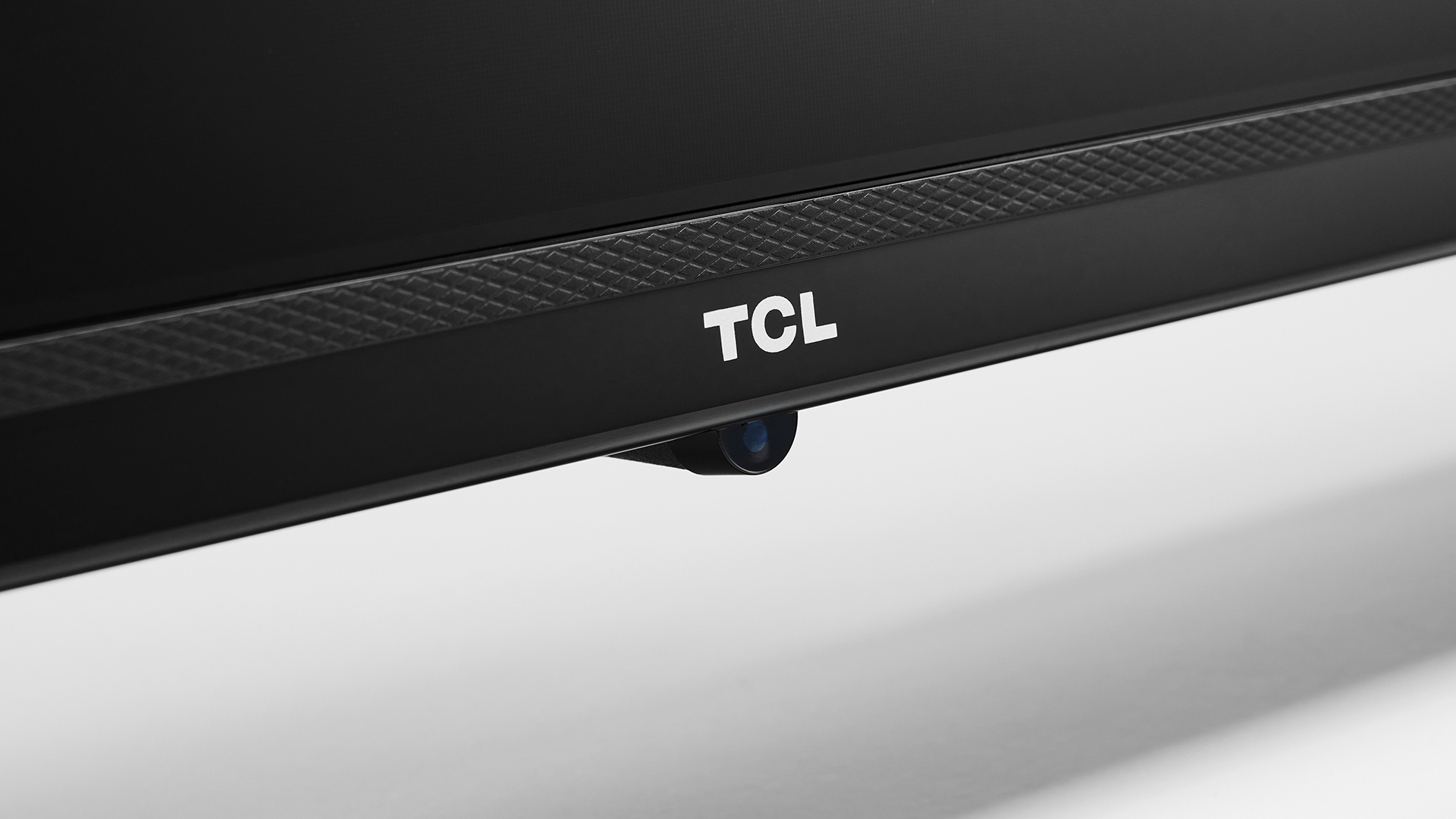
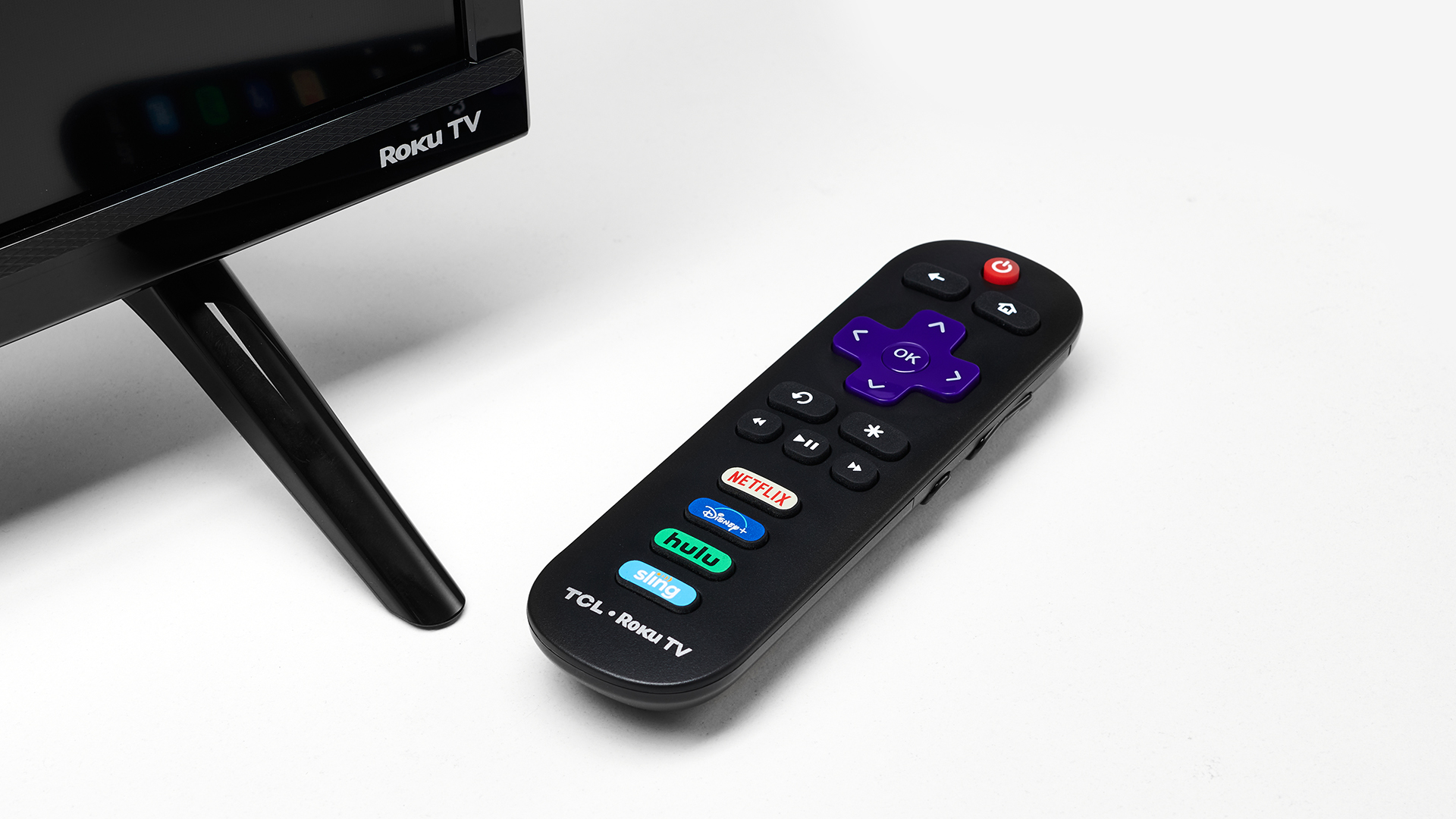
Specifications
Reasons to buy
Reasons to avoid
If you’re looking for something small for a bedroom or perhaps even to fit out an RV or camper, then this budget Roku TV-powered TCL may be just the size and price you need.
You won’t find much smaller or cheaper from a recognised manufacturer and, in TCL, you’re getting a TV from a maker that’s on the up.
The software comes in partnership with Roku, whose operating system provides the platform for all the settings and controls as well the apps and service, while the hardware is TCL. This rock-bottom price only gets you 720p resolution, but that could be all you need.
While there are a lot of cheap TV pitfalls, TCL has done well to avoid most of them. The backlighting is even, the picture is balanced and the sound is clear enough. Its colors lack subtlety and its motion handling is pretty poor but, for the very small size and price, this is a good option.
Read the full TCL 32S335 review
| Attributes | Notes | Rating |
|---|---|---|
| Picture | Not flagship levels of performance, but very good for the money | ★★★★☆ |
| Sound | As good as can be expected | ★★★★☆ |
| Features | The Roku OS elevates it above most 32-inch TVs | ★★★★★ |
How to choose
There's a huge amount to consider when choosing a new TV, but the biggest things are the money and space that you have available.
Size really does matter with TVs. At this level you're unlikely to find a genuinely huge TV but, as you'll see, 55 inches isn't out of the question. But should you go that large? You might find you can get an even better performance and feature set if you opt for a smaller model.
OLED TVs haven't dropped down to this level yet, though QLEDs are getting there (see Amazon's two entries in this list). At the moment, you're mostly looking at LCD sets with LED backlights. There are two types of LCD panel in play, though – IPS and VA – and they can perform quite differently to one another. You can click here for our full IPS vs VA explainer but, broadly speaking, IPS-based TVs tend to have better viewing angles while their VA rivals often have deeper blacks and better contrast.
4K is a must but also a norm, even at these sorts of prices, and you can expect to get HDR in at least the HDR10 and HLG formats, too. Some models may also support the more advanced HDR10+ format, but Dolby Vision is rarer.
Very few TVs sound genuinely good and that's unfortunately even more the case at this sort of price, so you should consider also buying a soundbar if you can. You needn't spend loads: our best cheap soundbars page features a number of recommendations under £100. If you are determined to keep things neat and rely on the in-built speakers, though, check our reviews to make sure that they're at least decent – there's no point in a great picture if the accompanying sound is garbage.
On the gaming front, you shouldn't expect HDMI 2.1 connections or support for next-gen features such as 4K/120Hz or VRR, but ALLM may well be supported.
How we test
Testing a TV is a long and complex process because a modern TV simply does so much. Not only does it need to handle a variety of content resolutions – standard-def, 1080p, 4K and sometimes 8K – and both standard dynamic range and high dynamic range (the latter in a number of formats), all of which need to be specifically tested, it also has a sound system with various advanced settings and a full smart platform. A TV is an all-in-one device in the best sense, but that also makes it a challenging review proposition.
As part of our testing process we manually check that every major app – from Netflix to All 4, Prime Video to Spotify – is not only present, but also outputting in the video and sound formats that it should. Just because there's a Disney+ app doesn't necessarily mean it's working in Dolby Vision and/or Dolby Atmos. In fact, in many recent cases it hasn't been.
We also connect both a PS5 and Xbox Series X in order to establish which advanced gaming features are and aren't supported, and on which of the TV's HDMI ports. Is 4K 120Hz supported? How about VRR? Is there a Dolby Vision game mode? Is there an HGiG preset for more accurate HDR tone mapping? We check all of these things, and measure input lag using a Leo Bodnar device.
We then test the TV's picture quality using a huge variety of content, from old DVDs to the latest 4K Blu-rays and plenty of streamed movies and TV shows in between. Every TV is tested against the best model at its price and size – we have a stockroom packed full of Award-winners for this very purpose.
We don't accept the out-of-the-box settings that a TV comes in either. While we intentionally don't go down the route of professional calibration (you shouldn't have to have your TV professionally calibrated in order to get the best out of it), we do spend hours adjusting settings using a mixture of test patterns and real-world content until we are sure we're getting the most out of a TV so that it has the best chance to shine.
While we almost always advise that a new TV is combined with a dedicated sound system such as a soundbar or AV amplifier, many people still prefer to stick with their flatscreen's built-in speakers, so we thoroughly test these too, using a wide variety of movie and music content and with great attention spent to the TV's many processing modes and individual settings.
We have state-of-the-art testing facilities in Bath and Reading, where our team of expert reviewers do all of our testing. This gives us complete control over the testing process, ensuring consistency. What's more, all review verdicts are agreed upon by the team as a whole rather than an individual reviewer, again helping to ensure consistency and avoid any personal preference.
The What Hi-Fi? team has more than 100 years experience of reviewing, testing and writing about consumer electronics.
From all of our reviews, we choose the best products to feature in our Best Buys. That's why if you take the plunge and buy one of the products recommended below, or on any other Best Buy page, you can be assured you are getting a What Hi-Fi? approved product.
FAQ
Are you testing any new cheap TVs?
We tend to review cheap TVs in batches and base the ones we pick on a variety of factors. But to be considered the set needs to retail for around, but ideal less than £500 / $500 and be easily available to buy from mainstream retailers. We’re planning on getting a fresh batch in for review in the coming months to make sure our advice is as up to date and accurate as possible ahead of key shopping events, the nearest of which is Amazon Prime Day. If there’s a set you particularly want us to check out and add to our review pile, get in touch on social media, or using our shared whathifi@futurenet.com email address.
What size TV should you buy?
While it might be tempting to think that bigger is better, the size of set that’s right for you is closely dependent on how close to the screen you’ll be sitting, and the resolution of the source material you’re watching.
Luckily, an organisation called SMPTE (which stands for the Society of Motion Picture and Television Engineers) has published detailed guidelines on exactly how far away you should sit in order to optimise the performance of your TV.
If you’re sitting the correct distance from your TV, you’ll see lots of detail, good edge definition and smooth, clean motion, but if you’re sitting too close, then you’re going to see more picture noise and artefacts.
On the other hand, sit too far away from the TV and you’ll struggle to pick up all the picture detail your TV has to offer.
The following distances are a good place to start:
65in – minimum 2.5m (Full HD) or 2.1m (4K)
50-52in – minimum 2.2m (Full HD) or 1.7m (4K)
46in – minimum 1.9m (Full HD) or 1.5m (4K)
40-42in – minimum 1.7m (Full HD) or 1.3m (4K)
32in – minimum 1.3m (Full HD)
Should you buy a 4K or Full HD TV?
This question is pretty much moot now, as the vast majority of TVs are now 4K. It's actually rather hard to find Full HD (1080p) models, even at relatively small sizes.
If you're buying a TV below 32 inches and can save a lot of money on a Full HD model, by all means go for it (4K won't be a huge benefit at that sort of size anyway), but otherwise 4K is both worthwhile and, in all likelihood, your only option.
Should you buy an HDR TV?
High Dynamic Range is without a doubt a much bigger deal than 8K, and certainly something you should consider before buying your next TV.
Essentially, the higher the dynamic range (brightness and colours), the more lifelike the picture. HDR offers greater subtlety and depth of gradations of colours, plus stronger contrast.
There are various types of HDR out there, and with different TV brands backing different variants, it can be a minefield trying to find the best option. Allow us to explain.
First up is HDR10, which is essentially the core HDR format that every HDR TV should support.
HDR10 is a static HDR format that applies the HDR values on a scene-by-scene basis (i.e. whenever the camera cuts to a new scene). Dolby Vision, on the other hand, applies this image information (called metadata) on a frame-by-frame basis. This dynamic form of HDR, when implemented properly, has the potential to improve upon the standard HDR10 presentation.
HDR10+ is a rival format to Dolby Vision. Created by Samsung, it also uses dynamic metadata but, whereas Dolby Vision is licensed, HDR10+ is a free, open format that any company can deploy as it sees fit.
Of these two 'dynamic' HDR formats, Dolby Vision is by far the most prevalent, both in terms of TVs and content, and if you have to choose between one and the other, that's the one we'd recommend. That said, you can now buy TVs from the likes of Philips and Panasonic that support both Dolby Vision and HDR10+.
Finally in our rundown of HDR formats is HLG (Hybrid Log Gamma), which was developed specifically for broadcasting by the BBC and Japan's NHK. It's used to deliver all of the HDR content offered by the BBC and Sky, so can be considered very important. Luckily, it's now almost as common as standard HDR10 in TV spec lists, so you should have little problem finding a model that supports it.
What inputs and outputs does your TV need?
These days, it's all about HDMI, which is used to connect everything from set-top boxes to video streamers, Blu-ray players to games consoles. Thanks to ARC/eARC (Audio Return Channel / Enhanced Audio Return Channel), a single HDMI connection can even be used to output sound to an AV receiver or soundbar at the same time as it receives a video signal.
Currently, three HDMI connections is standard on budget and mid-range TVs, while four is the norm for premium models.
The specification of the HDMI connections tends to differ depending on the price of the TV, too, with premium models now commonly getting at least one or two HDMI 2.1 sockets. These have greater bandwidth than their HDMI 2.0 counterparts and can support advanced formats such as 4K@120Hz and 8K@60Hz. Fancy gaming features such as Auto Low Latency Mode and Variable Refresh Rate are often supported via HDMI 2.1 sockets, too, though not always. It's sensible to check the specs thoroughly if there are particular features you're after.
After HDMIs, USB ports are the most abundant on modern TVs. You can use these to keep devices charged (often particularly useful for stick- or dongle-style streamers), and some TVs allow the connection of flash drives and hard drives for the recording of live TV content.
On the subject of live TV, you can expect practically every TV to have an aerial socket via which it can receive Freeview broadcasts, but many also have a satellite connection. Be warned, though; the presence of a satellite connection doesn't guarantee that there's a Freesat tuner on board. Without one, you'll receive only a patchy and disorganised selection of satellite TV channels.
Other useful connections include optical and stereo outputs, which can be used in lieu of HDMI ARC to connect legacy audio equipment. Headphone outputs are still fairly common, too, though Bluetooth is also supported by most TVs now and Samsung TVs in fact now feature the latter but not the former.
Lastly, while some TVs feature composite inputs (often via an adapter), most – even at the budget end – have phased out legacy connections such as SCART. So those clinging on to old video cassette recorders, for example, should be aware of that.
Which TV smart features and streaming apps do you need?
As with 4K, it's now hard to buy a TV that doesn't have a smart platform packed with streaming apps. Almost every TV will have Netflix and Amazon Prime Video on board, and Disney+ is fast approaching a similar level of ubiquity. Apple TV (which is great for pay-as-you-go movies as well as the Apple TV+ subscription service) is becoming increasingly common, too.
You'd have thought that BBC iPlayer, ITV Player, All 4 and My5 would be present on every TV available in the UK, but there always seems to be one brand that's lacking (it was LG in 2020 and Sony in 2021) so do check before you buy if any of those are important to you.
Other apps that are less common but potentially worth looking out for include BT Sport, Now, Britbox, and music apps such as Spotify and Tidal.
Should you buy an OLED, QLED or LCD TV?
LCD TVs, which require a backlight usually made up of white LEDs to show a picture on the LCD panel, are available in a wide variety of screen sizes and, thanks in part to the technology's low cost of production, at affordable prices.
OLED (Organic Light-Emitting Diode) is a panel technology that uses self-emissive particles – so there's no need for a backlight. This allows OLED TVs to be unbelievably slim, while also offering convincing pitch-dark blacks, strong contrast and superb viewing angles. LG, Sony, Panasonic and Philips are the big brands with OLED TVs in their line-ups and, broadly speaking, they're excellent.
QLED (Quantum-dot Light-Emitting Diode), meanwhile, is Samsung’s response to OLED. A QLED TV is an LCD TV but with a quantum dot coating over the backlight. However, the quantum dots (tiny semiconductor particles) in current QLEDs do not emit their own light. So QLED TVs, like conventional LCDs, rely on a backlight. The advantages of a QLED TV? You tend to get brilliantly vibrant colours, plus bright, sharp and crisply detailed images. Samsung's QLEDs have got better and better over the years, existing as a fine alternative to OLEDs TVs. Interestingly, though, Samsung has now launched its own range of OLED (QD-OLED) TVs.
Recent updates
30th January 2025: Old models no longer on sale removed. Updated recommendations added.
2nd May 2024: added new author information, top tips and additional FAQs
6th November 2023: removed Samsung UN55TU8000, added Samsung UN55CU8000 and Amazon Fire TV Omni QLED QL50F601
- Check out the best TVs
- And the best TV deals
Get the What Hi-Fi? Newsletter
The latest hi-fi, home cinema and tech news, reviews, buying advice and deals, direct to your inbox.
Tom Parsons has been writing about TV, AV and hi-fi products (not to mention plenty of other 'gadgets' and even cars) for over 15 years. He began his career as What Hi-Fi?'s Staff Writer and is now the TV and AV Editor. In between, he worked as Reviews Editor and then Deputy Editor at Stuff, and over the years has had his work featured in publications such as T3, The Telegraph and Louder. He's also appeared on BBC News, BBC World Service, BBC Radio 4 and Sky Swipe. In his spare time Tom is a runner and gamer.
-
Robwhr ReplyWhat Hi-Fi? said:The best cheap 4K TVs combine great picture performance with the latest smart TV features, without breaking the bank.
Best cheap 4K TVs 2020: the best budget TVs : Read more
just bought 50pus8402 from Currys, Android, Freeview Play, 3 sided Ambilight, absolutely superb, much better spec than the sapphy Os of the one you listed in your top 10
only £399 down from £799 -
R6ex TCL has cheaper and better stuff than those listed.Reply
I especially like their C715 or C716 and S535 or even S635
QLED budget TV. -
robos ReplyR6ex said:TCL has cheaper and better stuff than those listed.
I especially like their C715 or C716 and S535 or even S635
QLED budget TV.
Only someone without personal experience with TCL can recommend it. I own 55C715 QLED, its a complete disaster. While the screen might be OK, the UI is terrible, slow, laggy. It requires frequent restarts. It lacks some basic settings, like audio output/mute built in speakers. I thought that I can solve that by adding xiaomi tv box, but it was a failure, since TCL has problems with CEC, so I had to have 3 remote controls on table, 1st to start up and switch off TV, second for TV box and 3rd for volume on DAC. Unacceptable.
I will sell that TCL TV and buy Samsung UE55TU8000. Because I had opportunity to try that and it was much better than TCL -
tipyguilford Hi there, may i please ask if you would reccommend the $500 FFalcon 4K 55" from Jbhifi. https://www.jbhifi.com.au/products/ffalcon-55uf2-55-ultra-hd-hdr-smart-tvive seen some bad reviews for it, but i think how bad can a tv be if its just playing a picture. I will use it for streaming and on my ps4 pro to play games.Reply
